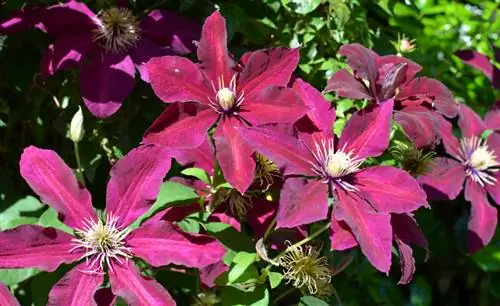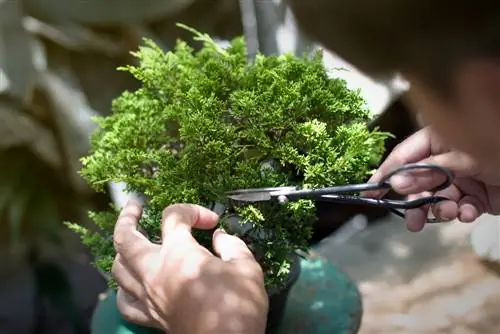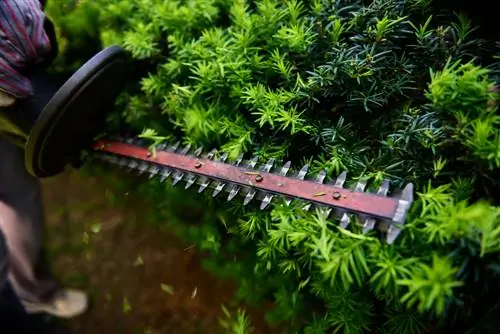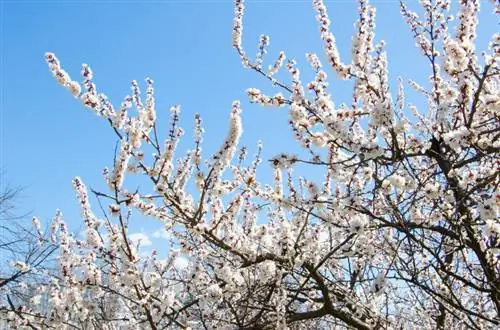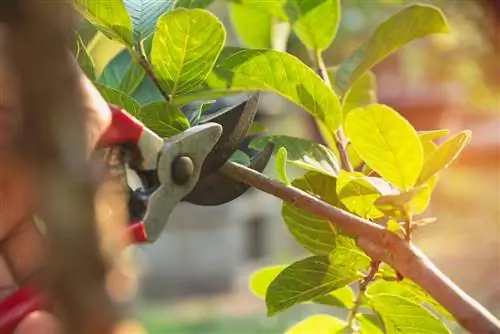- Author admin [email protected].
- Public 2023-12-16 16:46.
- Last modified 2025-01-23 11:20.
The topic of pruning clematis is a controversial topic among gardeners. We looked around among recognized experts and compiled useful tips. Here you will find help in deciding whether to cut back a clematis or not.

Should you prune a clematis or not?
Whether a clematis should be cut back depends on the species: spring bloomers should not be pruned; Twice-flowering hybrids can be easily cut after the first bloom; Summer bloomers require careful pruning in autumn.
It's better not to cut back spring bloomers
It is the vital wild species, such as Clematis alpina or Clematis montana, that do not necessarily require pruning. If you choose the wrong time, in the worst case scenario you will deprive the magnificent clematis of this year's abundance of flowers. Early-flowering clematis lay their buds the previous year. How to properly handle the cut if necessary:
- Short tendrils of spring-flowering clematis that are too long only after flowering
- Otherwise just clean out wilted flowers and developing seed heads
- A rejuvenation cut every 4-5 years prevents aging
A light summer cut is recommended here
Twice-flowering hybrids, like the majestic clematis 'The President', welcome a light pruning after the first bloom. To do this, cut off all withered flowers including the pair of leaves underneath in June. The clematis thanks you with another bloom after 6-8 weeks.
Summer bloomers require courageous pruning
They bloom continuously from June until well into autumn and develop an impressive habit. The powerful summer bloomers among the Clematis species produce long tendrils every year on which they bloom lavishly. In order for Clematis viticella and its relatives to achieve this miracle, pruning is crucial. This is how it works:
- Late blooming clematis should be cut every autumn
- Short the entire clematis down to 20-30 centimeters in November/December
- Carefully cut off all dead wood at the base
If you do not radically cut back this clematis, sooner or later you will be confronted with an old clematis. Since light and air no longer reach the inside of the climbing plant, the shoots turn bald into sad sticks.
Tips & Tricks
With a freshly planted clematis, the question does not arise as to whether it should be cut back or not. Here, a build-up cut in November or December of the planting year is essential. To do this, cut all tendrils back to 20 or 30 centimeters. The result is a powerfully sprouting, densely branching climbing plant next year.

